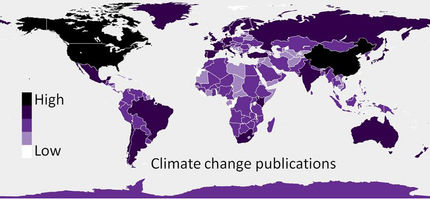Suburban sprawl accounts for 50 percent of US household carbon footprint
Advertisement
Many U.S. cities are taking steps to grow urban centers in an attempt to reduce greenhouse gas emissions. But a challenge is the significant carbon footprint of spacious suburban living, which in many areas, may be cancelling out these efforts. The report, appearing in the ACS journal Environmental Science & Technology, found that about half of the country's household carbon footprint comes from people living in the suburbs.
Christopher Jones and Daniel M. Kammen point out that U.S. households, though they only comprise 4.3 percent of the global population, are responsible for about 20 percent of annual worldwide greenhouse gas emissions, which are driving climate change. In response, many governors and mayors across the country have pledged to reduce their states' and cities' emissions. But more information on the size and composition of household carbon footprints is needed to inform policies to make these reductions happen. A few studies have helped fill in some gaps, but they're mostly small in scale and not broadly applicable. Jones and Kammen set out to paint a bigger picture.
They built an analytic model using national survey data to estimate average household carbon footprints for over 30,000 zip codes and 10,000 cities and towns in all 50 U.S. states. Their technique integrates a wide range of sectors, including transportation, household energy use and consumption of food, goods and services. The researchers found a number of surprising nuances. For example, Jones and Kammen found that population-dense suburbs have significantly higher carbon footprints on average than lower density suburbs, and there is a huge range across cities. As a result, they conclude that "an entirely new approach of highly tailored, community-scale carbon management is urgently needed."
Most read news
Organizations
Other news from the department science

Get the chemical industry in your inbox
By submitting this form you agree that LUMITOS AG will send you the newsletter(s) selected above by email. Your data will not be passed on to third parties. Your data will be stored and processed in accordance with our data protection regulations. LUMITOS may contact you by email for the purpose of advertising or market and opinion surveys. You can revoke your consent at any time without giving reasons to LUMITOS AG, Ernst-Augustin-Str. 2, 12489 Berlin, Germany or by e-mail at revoke@lumitos.com with effect for the future. In addition, each email contains a link to unsubscribe from the corresponding newsletter.






























































